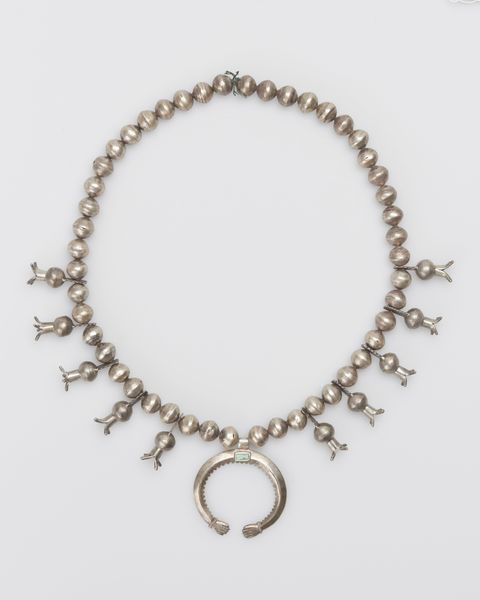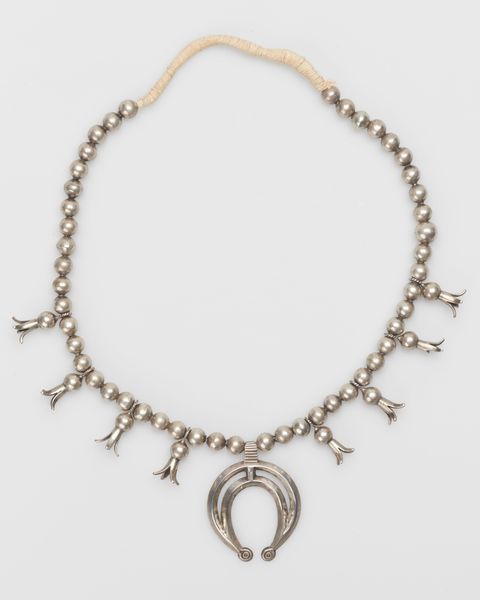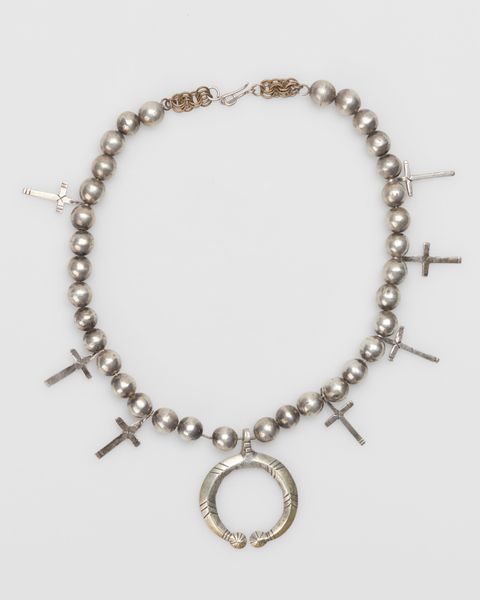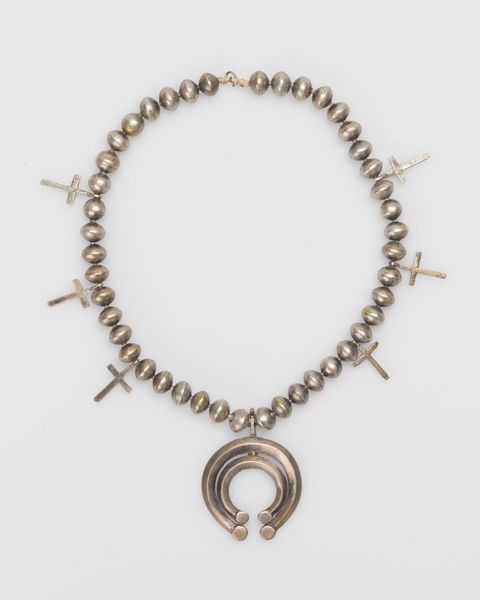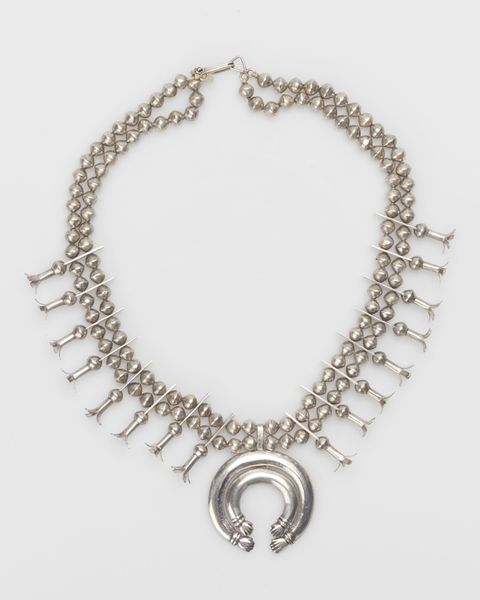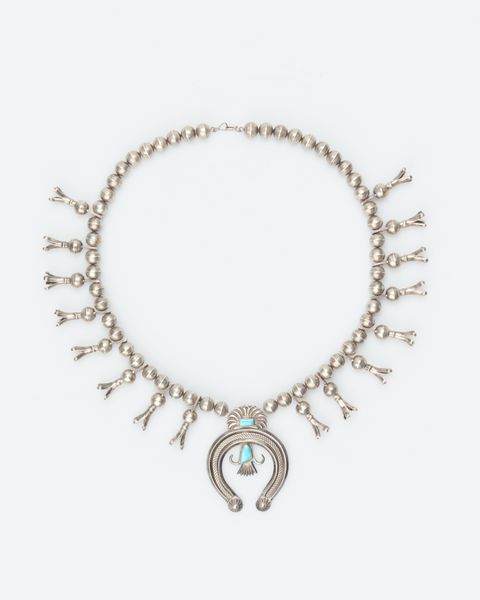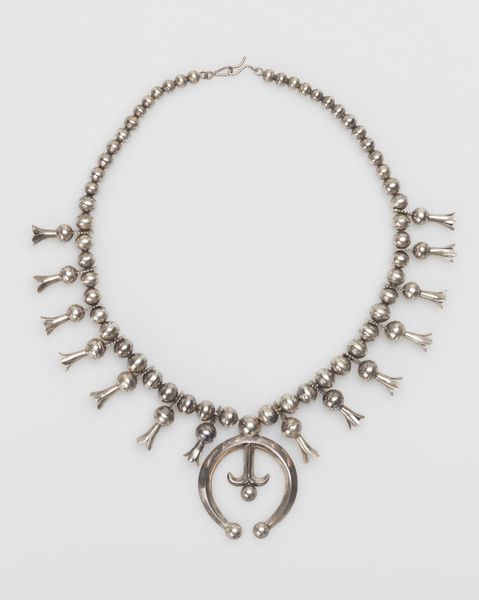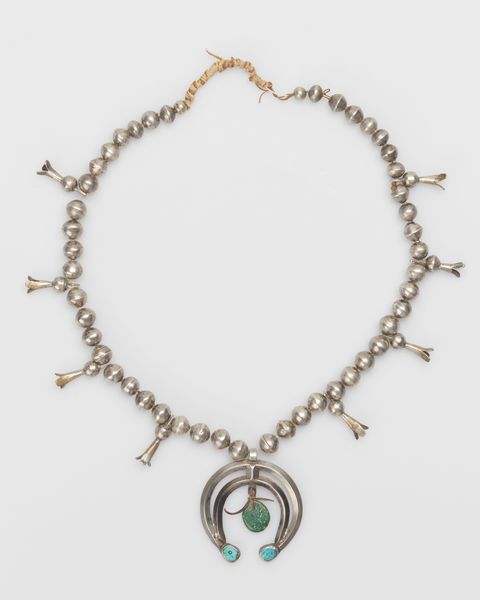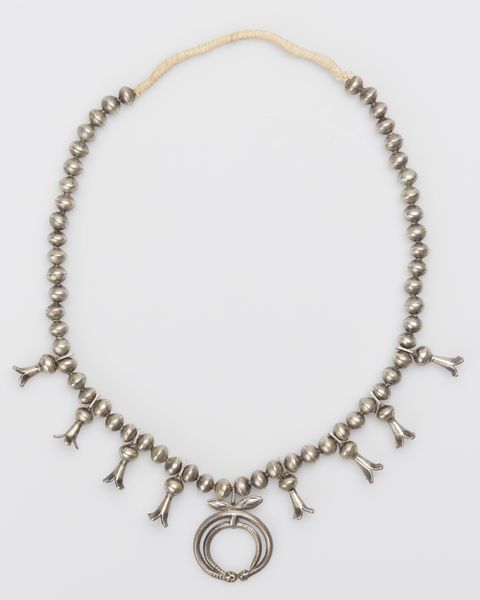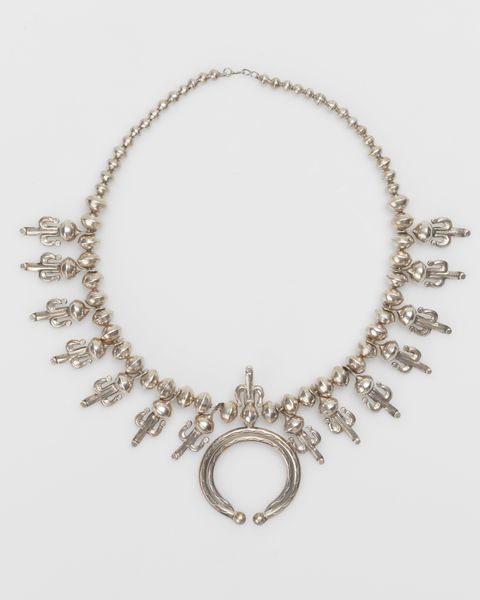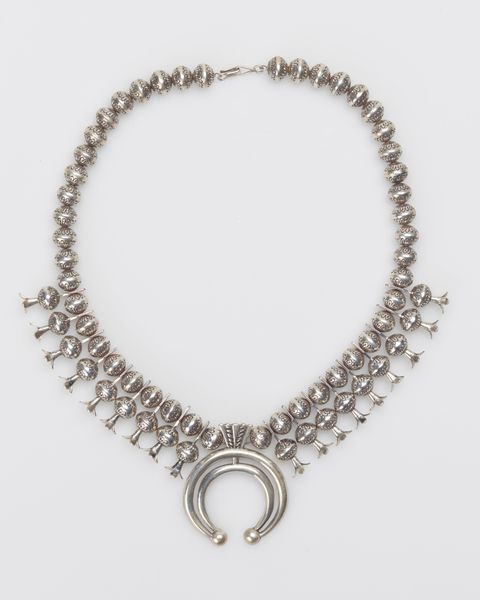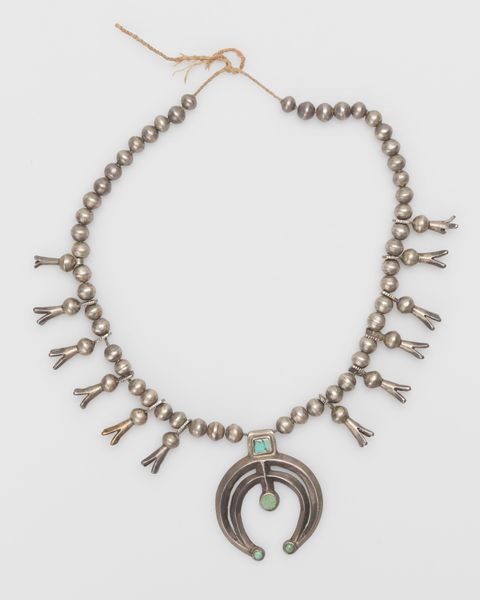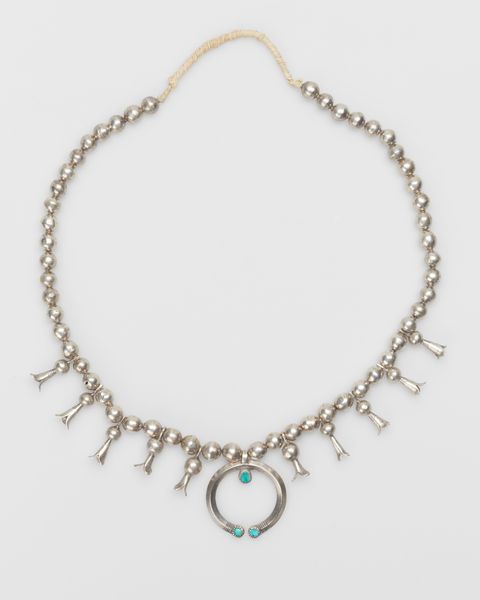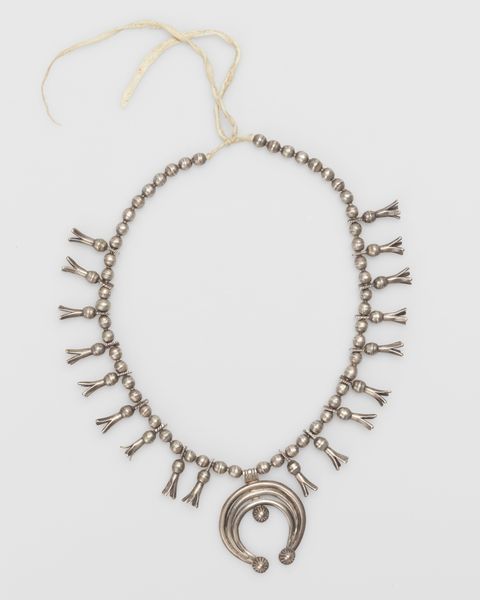
silver, metal
#
silver
#
metal
#
indigenous-americas
Copyright: Public Domain
Editor: This gorgeous necklace, created by a Navajo artist sometime before 1930, is crafted from silver. It has such an intricate and repetitive composition. How do you interpret this work? Curator: I see a potent combination of cultural exchange and material agency. Let’s focus on the silver itself. Where do you think the silver came from? The impact of trade routes? The relationship to colonial economies? Editor: Oh, I hadn't considered the trade element so much. Was silver easily accessible to Navajo artists at this time? Curator: Not inherently, no. The silver’s likely sourced from European-American mining and trading networks. And look at the labor involved! Each bead, each squash blossom element, is meticulously shaped. Consider what that repetitive, skilled labor tells us about the economy of the time. It shows a blend of indigenous artistry within imposed systems. Do you see how the material reality reshapes aesthetic interpretations? Editor: So it’s not just about visual beauty; it’s about the social and economic forces involved in its creation and distribution? Curator: Precisely. This piece is more than ornamentation, it is a microcosm of cultural and material interaction. How do we define 'art' when considering the tools, resources, and labour intertwined in this context? The silver, through its materiality, speaks volumes about Navajo artistry and endurance. Editor: That’s given me so much to think about in terms of how we view craft and so-called ‘high art’ and whose labor is recognized in the field. Curator: Indeed. Shifting the focus to materials helps challenge the established art narrative.
Comments
No comments
Be the first to comment and join the conversation on the ultimate creative platform.
